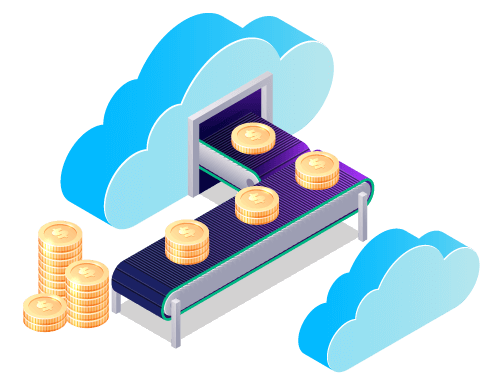Cloud Cost Optimization
Cloud cost optimization and the proper FinOps practices can significantly reduce your overall cloud usage and cost. We can help you find and fix issues with your cloud utilization and introduce FinOps best practices, which can vastly reduce your TCO.

Cloud Optimization Workflow
Following are the steps and procedures that we will follow as part of the cloud cost optimization. At the end of the process, we’ll get back to you with the details and advice to create FinOps ( Cloud Financial Operations ) guidelines to avoid future cloud cost-related issues.
Spending History Assessment
Compute Resources Optimization
Instance Types examples:
Amazon EC2 Instance Types
Azure Virtual Machine series
GCP Machine families
Note: We might also need to talk with your development teams to understand your application's exact resource requirements and details.
Reserved Resources Allocation
RI's examples:
Azure Reserved Virtual Machine Instances
Amazon EC2 Reserved Instances
GCP: Consuming and managing reservations
Besides the infrastructure reviews, we might need to talk with your development teams to know the currently running projects and project durations. That will help us understand where else we can effectively use the RI's.
Resource Elasticity Optimization
We can classify Elasticity into two subcategories.
1. Time-based elasticity
2. Volume-based elasticity
In the "time-based elasticity", we can review and automate cloud resources to turn on when we need them and turn off when we are not using the resources.
We can review your autoscaling setups in the volume-based elasticity to ensure you have the proper auto-scaling configurations in place and scaling matches the exact demand.
Spot Instances Utilization
Spot instances examples:
Amazon EC2 Spot Instances
Azure Spot Virtual Machines
GCP: Preemptible Virtual Machines
By using Spot instances or Preemptible Virtual Machines, you can save up to 80% to 90% on your compute engine cost, and our team can help you find areas where you can effectively use spot instances.
Storage Cost Optimization
Storage classes examples:
Amazon S3 Storage Classes
Azure Storage Services
GCP: Storage Classes
Our FinOps team can check your currently allocated storage resources and can and correct these for you.
Implement Cost Management Practices
Cost management examples:
Cloud Financial Management with AWS
Azure Cost Management and Billing
GCP: Cost Management
We can bring these changes to your FinOps, and that will give you more insight into what is happening with the financial side of your cloud and make the FinOps easy for you besides saving money.
Check Multi-Cloud Possibilities
Provide FinOps Advices
Please reach us if you have any doubts regarding any of our cloud cost optimization procedures.
Plan briefing in under 90 seconds!
Listen to this AI-generated cloud optimization briefing if you still have any doubts or if in a hurry. This will only take under 90 seconds!
Cloud Optimization | FAQ
Most frequently asked questions about Cloud Cost Optimization Service | Read more frequently asked questions
Please, please reach us for cost optimization before migrating to the cloud. That is the perfect time to plan everything and create an optimization strategy. Cloud optimization after the migration is double the amount of work. ( Please note that we are providing cloud migration service and cloud optimization is part of that. )
Also, it will be difficult to change the instance types and storage classes after the migration.
Spot instances are recommended only for fault-tolerant workloads or for batch jobs because the cloud provider will terminate these instances anytime whenever they need these resources back.
It depends on your infrastructure complexity. So, we can’t give you an ETA before the initial review.

